Silicone kitchenware is loved for its flexibility, heat resistance, and easy cleaning. But over time, many users notice lingering smells, like oil, garlic, spices, or even a plastic-like odor. These smells can affect not just the cooking experience, but also the taste of your food.
Where do these odors come from? And how can you remove them effectively? This guide will walk you through the answers.
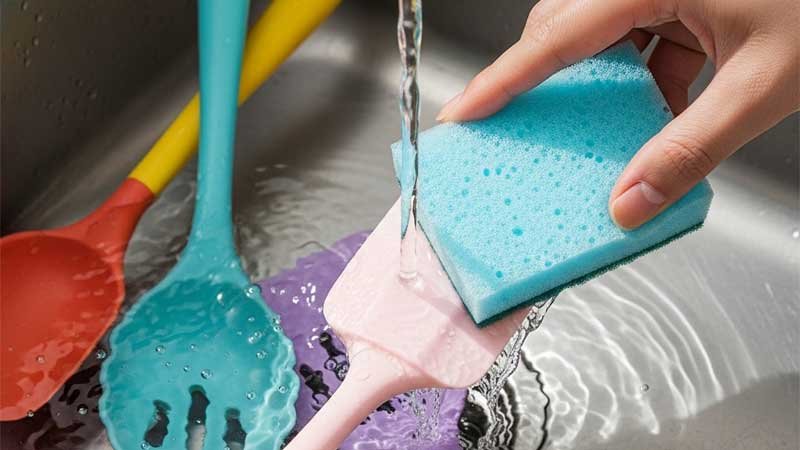
Why Does Silicone Absorb Smells?
It all comes down to how it’s made. Silicone looks smooth, but under a microscope, it’s full of tiny pores. These pores trap odor molecules, especially from strong-smelling foods.
Silicone also holds onto oily smells more easily because of how it bonds with certain molecules. Heat makes this worse by pushing smells deeper inside. And if food sits on the surface too long, the odors have more time to soak in.
Which Foods Are Most Likely to Leave Smells in Silicone?
Some foods are much more likely to leave stubborn odors in silicone kitchenware. The main culprits fall into two categories: high-fat foods and strong-smelling ingredients.
Oily foods like bacon grease, butter, and mayonnaise are common examples. These foods contain a lot of fat molecules. These easily seep into the tiny pores of silicone. Fat is hard to clean off completely. Over time, leftover oil can break down and oxidize, creating a rancid or stale smell that gets trapped in the material.
Strong-smelling foods such as garlic, onion, curry, and fermented items like kimchi are another major cause. These foods contain sulfur compounds and other volatile organic compounds (VOCs). Their tiny odor molecules can quickly sink deep into silicone, and they don’t wash away easily. The smell may linger even after cleaning and can affect the flavor of your next meal.
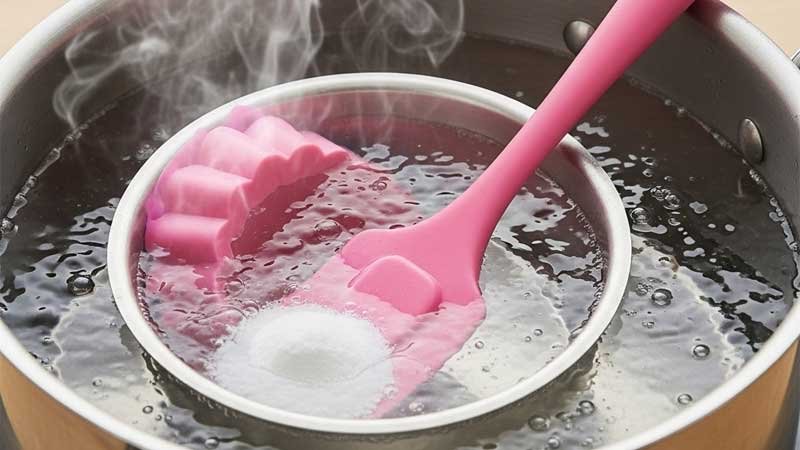
What Are the Best Ways to Remove Odors from Silicone?
If your silicone items have started to hold on to odors, don’t worry. There are several safe and effective ways to freshen them up. Whether the smell is light or stubborn, these steps can help you bring your silicone back to a clean, odor-free state.
Daily Cleaning
For light odors, regular cleaning is usually enough. Wash your silicone kitchenware with warm water and mild, unscented dish soap. Use a soft brush or sponge to clean hard-to-reach corners and grooves. After washing, let everything air dry completely. Moisture can trap smells and bring them back.
Tip: Avoid dish soaps with fragrance. Scented soaps may react with oils and make the smell worse.
Baking Soda Boil
This is one of the most effective ways to remove deep-set odors. Fill a pot with water and stir in 2–3 tablespoons of baking soda. Once the water boils, place your clean silicone items in the pot and let them simmer for 10 to 20 minutes. Take them out and let them dry in the open air.
Why it works: Baking soda is alkaline. It breaks down greasy molecules and neutralizes acid-based odors.
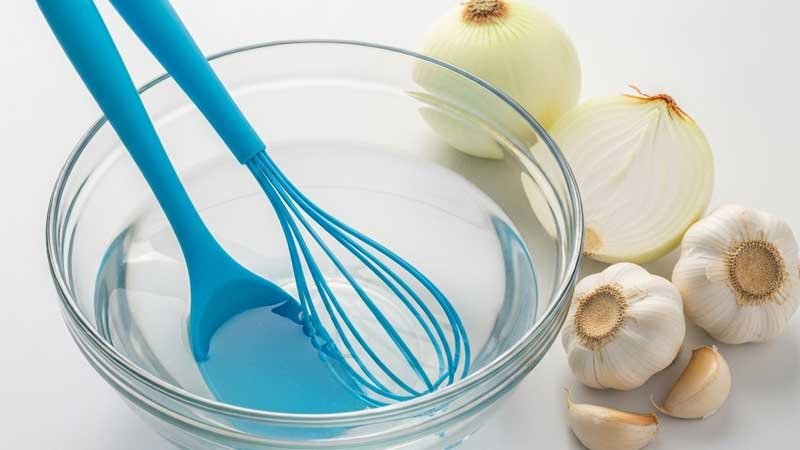
Vinegar Soak
Another easy method is to soak your silicone in a mixture of white vinegar and water (equal parts). Let the item soak for 1 to 3 hours depending on the odor strength. After soaking, rinse it well with water and let it air dry.
Why it works: Acetic acid in vinegar helps break down natural food smells like garlic or onion.
Lemon Juice + Sunlight
This method uses two natural odor-fighting tools: lemon and sunshine. Slice a lemon or squeeze out its juice, then rub it over the surface of your silicone item. Once it’s fully coated, place it under direct sunlight for about 2 hours. Afterward, rinse it with warm water.
Why it works: Lemon juice helps remove odors, and sunlight helps break down odor molecules. It’s safe and eco-friendly.
Oven Method
For stubborn odors that won’t go away, the oven can help. Preheat your oven to 180°C (350°F). Make sure the silicone is clean and completely dry, then place it inside and bake for 20 minutes. Let it cool on its own afterward.
Note: Only do this with food-grade silicone. Make sure it’s oil-free.
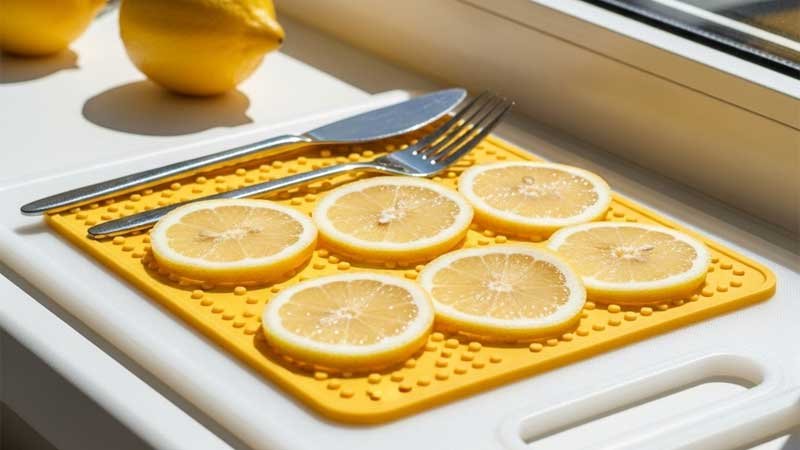
How Can You Prevent Odors in Silicone Kitchenware?
The best way to deal with odors is to stop them before they start. By building a few simple habits into your routine, you can greatly reduce the chance of smells sticking to your silicone tools.
- Clean right after use: Don’t wait. Wash your silicone kitchenware as soon as possible after using it. The longer food residue sits, the more likely it is to leave behind a smell.
- Keep items separate: Use different silicone tools for different types of food. For example, keep baking mats for pastries only, and avoid using them for strongly seasoned dishes like garlic shrimp or curry.
- Dry thoroughly before storage: Always let silicone items air dry completely before putting them away. Moisture can trap odors or even grow mold over time.
- Store in a clean, airy place: Keep silicone tools in a well-ventilated area, away from items with strong smells. Avoid sealing them in plastic bags or closed containers for long periods.
- Deep clean regularly: Even if you don’t use them often, it’s a good idea to deep clean your silicone kitchenware once a month. A soak in baking soda or white vinegar can help keep everything fresh.
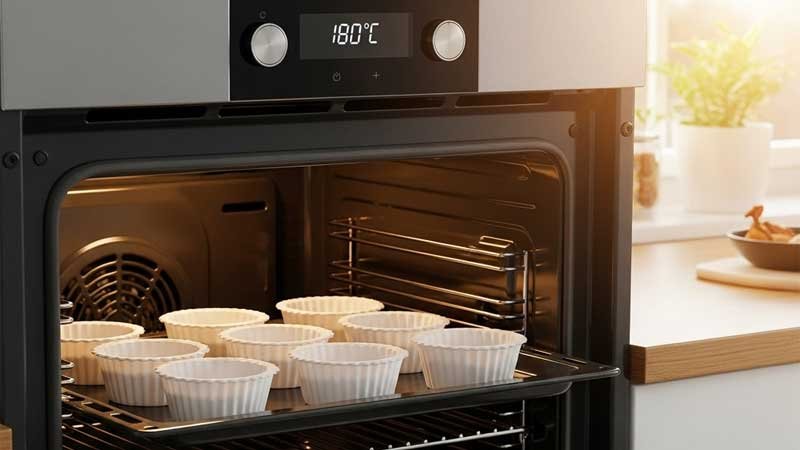
Conclusion
Odors aren’t a big deal, as long as you use the right method. Most silicone items can be refreshed with a simple baking soda boil or an oven treatment. In daily use, small habits like prompt cleaning and smart storage can go a long way toward keeping your silicone tools fresh and odor-free.
Need help choosing high-quality, food-safe silicone products? Reach out to our team for trusted recommendations and expert support.